#ocean species
Text
🐠 Daily Fish Fact: 🐠
Great Barracuda: The lower jaw of the large mouth juts out beyond the upper. They possess strong, fang-like teeth that are unequal in size and set in sockets in the jaws and on the roof of the mouth. They are voracious predators and hunt by ambush. They rely on surprise and short bursts of speed up to 27 mph to overrun their prey, sacrificing maneuverability. Barracudas are more or less solitary in their habits. Young and half-grown fish frequently congregate in shoals.
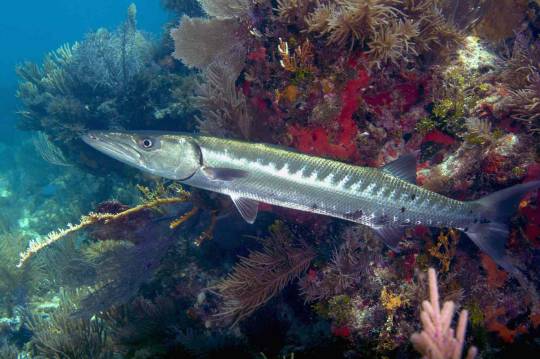
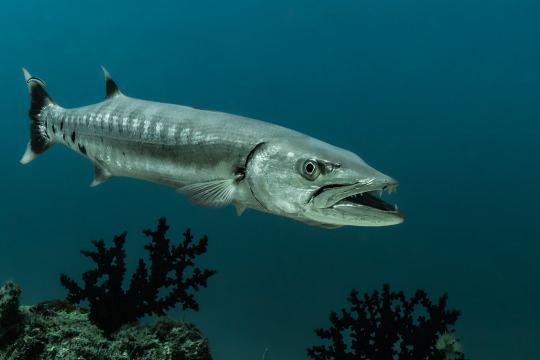
#great barracuda#barracuda#fish#fish post#respect the locals#toothy#ocean#ocean fish#saltwater fish#saltwater#marine#marine species#marine animals#marine biology#marine life#ocean life#ocean species#special interest#daily fish#daily fish fact#fish fact#facts about fish#shark blog
63 notes
·
View notes
Text
#good news#nature#animals#environmentalism#environment#sea horses#ocean conservation#ocean species#marine life#marine animals#animal conservation
34 notes
·
View notes
Photo
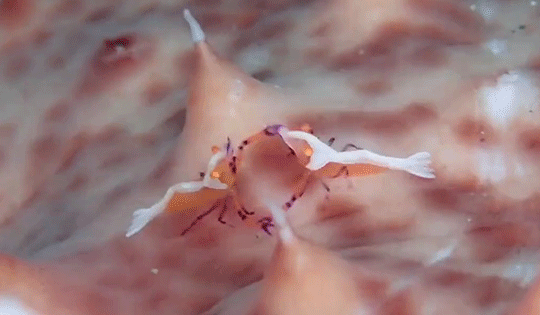

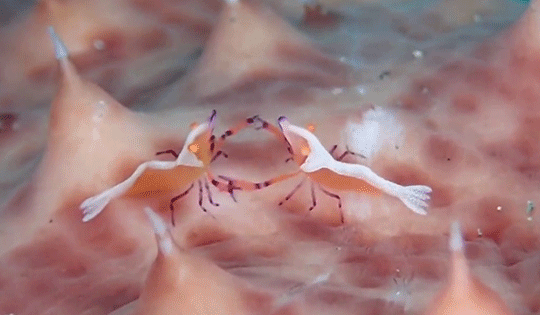
Two tiny shrimps battle each other on the back of a sea cucumber, filmed at a depth of 15m.
Seacrop Diving School | Japan
#ocean#japan#sea cucumber#shrimp#haven't the faintest idea what the species are sorry! i just like their lil hands lol#edit:#emperor shrimp#juvenile empy shramps to be exact!#thank u to the people who told me in the notes!#a battle of kings......
63K notes
·
View notes
Text
THREE NEW SHARK SPECIES THIS WEEK!
The second week of July 2023 something extraordinarily beautiful happened, the findings of 3 new species of sharks for were announced
A new angel sharks species was identified, from the western Indian Ocean on the Mascarene Plateau and off southwestern India in 100–500 m depths, the Lea’s angel shark Squatina leae, was recognized to be different genetically and morphologically distinct from its congeneric species Squatina africanae, following unique morphological features. This species was first detected in 1988 after finding three unusual, small sharks, but till today was completely understood. The angel shark is named after one of the author’s fiancee’s late sister, Lea-Marie Cordt.

- Squatina leae, adult male, in dorsolateral.
Angel sharks are “flatter sharks”, possesing distinctly broad, dorsoventrally flattened bodies, a short snout with large mouth and nostrils, eyes on top of the head close to the large spiracles, very large pectoral fins, and a lateral caudal keel. They've evolved to be ambush predators, they lie in wait for prey to pass closely overhead before attacking.
Reference (Open Access): Weigmann et al., 2023. Revision of the Western Indian Ocean Angel Sharks, Genus Squatina (Squatiniformes, Squatinidae), with Description of a New Species and Redescription of the African Angel Shark Squatina africana Regan, 1908. Biology
From North Australia, another species of hornshark is described based on six whole specimens and a single egg case. The painted hornshark Heterodontus marshallae was previously considered to be the same with the zebra bullhead shark another well know bullhead shark from the central Indo-Pacific from Japan to Australia, but genetic and morphological analyses indicated the sharks were different, but looking alike. The painted hornshark is endemic to northwestern Australia and occurs in deeper waters, at 125–229 m below surface.

- Lateral view of two mature female painted hornshark Heterodontus marshallae showing small differences between individuals
The painted hornsharks is named in honour of Dr. Lindsay Marshall www.stickfigurefish.com.au a scientific illustrator and elasmobranch scientist who expertly painted all the sharks and rays of the world for the Chondrichthyan Tree of Life Project.
Reference (Open Access): White et al., 2023 Species in Disguise: A New Species of Hornshark from Northern Australia (Heterodontiformes: Heterodontidae). Diversity.
And from an unidentified shark egg collected from the deep waters of northwestern Australia, in 2011 recently helped researchers identify a new species of deep water cat shark. Called ridged-egg catshark Apristurus ovicorrugatus after its eggs, it was collected in the earlys 90 but remained unknown to date. This sharks presents white eyes, and is small in size, reaching less than a half meter in length. .
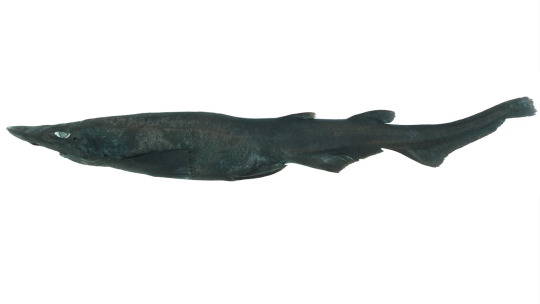
- Lateral view of female Apristurus ovicorrugatus before preserved. Photo by CSIRO.
Egg cases belonging to this species had been documented as early as the 1980s, but could not be matched to any species of Australian shark until recently scientists examined a shark specimen of previously uncertain identity in the CSIRO collection.

-egg cases of Apristurus ovicorrugatus. Scale bar is 10 mm
Reference (Open Access) White,et al., 2023 What came first, the shark or the egg? Discovery of a new species of deepwater shark by investigation of egg case morphology. Journal of Fish Biology.
#Squatina leae#Squatina#new species#elasmobranch#shark#biology#marine biology#science#marine science#indian ocean#bioblr#sciblr#sci#painted hornshark#Heterodontus marshallae#Heterodontus#Apristurus ovicorrugatus#Apristurus#long post#Ridged-egg catshark#Lea’s angel shark
3K notes
·
View notes
Text
next time you make baseless claims about how scary sharks are, look at a salmon shark.
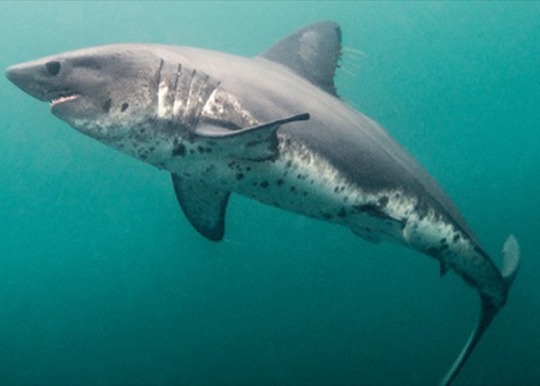
look at him. you’re gonna look at him and tell me he’s infesting our waters? that this is a creature of terror?

look at him. look at him real good. this is a little dude. how fucking dare you talk about him this way. he’s gonna cry now, look at what you did. bet you feel real fucking stupid, huh? real silly? you better. think about what you’ve done. bitch
#I just.#I think we don’t talk abt salmon sharks enough#no one should be mean to sharks regardless of their species#even sharks that may seem scarier than salmon sharks deserve respect#people who r shark haters worry me. why do u have so much hate in ur heart for these dudes#sharks#sharkposting#salmon shark#shark#marine bio#marine biology#marine biology memes#biology#ocean#ocean memes#neurodivergent#current fixation#ocean lover#oceancore#shark lover#shark love#post
6K notes
·
View notes
Text

~the deep below~
#creature design#creechures#biology#ocean#creature#eel#original art#deep sea#digital art#alien species#like aliens#to me#green color#or teal?#not sure#color i like#this is the third one i finished#there are two more on my art blog#they take so long to make#labor of love
638 notes
·
View notes
Text
[Warning: Graphic (some very graphic) shark-fishing pictures at the link.]
"Suhardi isn’t your average snorkeling guide. Born on the Indonesian island of Lombok, he’s spent his life on water. While he now seeks out sharks for the enjoyment of tourists, he once hunted sharks to help earn money to feed his family and educate his two children.
Suhardi was a fisherman for more than 20 years. He first started fishing working on his parents’ boat, but was then asked to join the crew of a shark boat where he was told he could earn a lot of money. Back on deck, he looks embarrassed to divulge what a meager wage it was, but finally confesses he earned around $50 for up to a month at sea.
Now he and 12 other former shark fishermen are part of The Dorsal Effect, an ecotourism company that helps ex-shark hunters find a new vocation. Each week, the team takes groups of tourists, schoolchildren and university students to off-the-grid locations and guides them around pristine reefs. Each trip is designed to take guests on an exploratory journey of both the shark trade and marine conservation through the eyes of the Sasak people of Lombok.
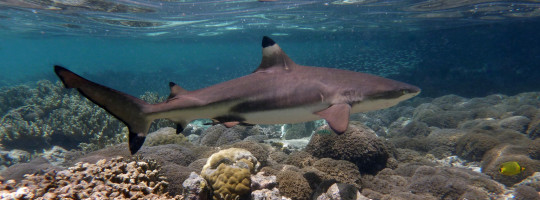
Lombok is a hotspot for marine diversity, sitting just east of the Wallace Line, a biogeographical boundary separating Asia and Australia and their respective fauna. Pristine coral gardens and around 80 species of sharks can be found in its waters. The island is also part of the world’s largest shark-fishing nation. Only the whale shark (Rhincondon typus) is protected in Indonesia; all other sharks can be legally caught.
The Dorsal Effect first launched in 2013, a year after Suhardi met Singaporean ecologist Kathy Xu, who had traveled to Lombok to find out more about the shark trade. The diminutive but quietly determined Xu wanted to protect sharks, but because she knew shark fishing was poorly paid and dangerous, she wanted to hear the fishermen’s stories too. They told her how once they could fish for sharks close to shore, but now with the shark population dropping, the fishermen said they needed to travel farther out to sea, only to come home with a relatively poor catch. The reduced catch also meant reduced pay, so they often couldn’t cover their costs...
Yet, when Xu asked why fishers didn’t seek out another trade, she learned they didn’t want to be separated from the sea. They saw it as part of their heritage.
But as they spoke longer, the shark fishermen talked about the coral gardens that could be found under the waves, ones that only they knew about. Inspired by a whale shark diving trip she’d taken with scientists on the Great Barrier Reef, Xu had an idea. “If such spots exist,” she recalls telling the fishers, “I could take tourists out with you and pay you more than you earned shark fishing”.
At first, Xu guided the former shark fishermen on how to become eco-friendly tour operators. They dropped anchor away from the reef, served guests plant-based dishes, and made sure all trash was taken back to shore. But then Xu saw that something special was happening: The former fishermen had started to take the guest experience into their own hands, making sure tourists felt at home. Suhardi painted “Welcome” in large letters over the front of his boat, fitted green baize to the top deck for outdoor seating, and hung curtains in the cabin so his guests could enjoy some shade.
Suhardi has already bought a new boat with his earnings from snorkeling trips. “Every day is my best day,” laughs Suhardi, whose smile always travels from his mouth to his eyes.
While they were receiving tourists from across the globe, there was another group that Xu wanted to reach out to. “I think it was the teacher in me who felt impassioned about influencing the young,” she says. She reached out to schools and created a five-day program that would help students understand the shark trade and local conservation efforts. During the program, paid for by the school and students, participants would not only meet the ex-shark fishermen so they could ask them about their lives, but also hear from NGOs such as the Wildlife Conservation Society about their efforts to slow the trade. The Dorsal Effect also hired marine biologists to host nightly lectures and help the students with their field surveys...
The students were faced with the realities of the fishing trade, but they were also encouraged to take a balanced view by The Dorsal Effect team. The villagers weren’t just taking the fins, and throwing away the rest of the shark; they processed every piece of the animal. While they did sell the meat and fins to buyers at the market, they also sold the teeth to jewelers, and the remains for pet food.
The Dorsal Effect also takes students on an excursion to the fishermen’s village, a small island that lies off the coast of Lombok. Marine biologist Bryan Ng Sai Lin, who was hired by The Dorsal Effect team, says that on one trip with students he was surprised by how quickly the young people understood the situation. “One of them said it’s good to think about conservation, but at the same time these people don’t really have any other choice,” Lin says....
Conservation scientist Hollie Booth of Save Our Seas, which does not work directly with The Dorsal Effect, says the need to provide legal profitable alternatives to shark fishing is critical: “We are never going to solve biodiversity and environment issues unless we think about incentives and take local people’s needs into account. These kinds of programs are really important.”"
-via Mongabay, December 15, 2023
#shark#sharks#fish#marine biology#marine animals#sea creatures#fishing#marine life#marine conservation#endangered species#overfishing#indonesia#lombok#school#field trip#ocean#pacific ocean#biodiversity#conservation#environmentalism#fishermen#scuba#scubadiving#underwater#diving#coral reef#ocean life#good news#hope
691 notes
·
View notes
Text

the eternal struggle
904 notes
·
View notes
Text
Reminder that dolphins are not inherently evil
You cannot apply human morals to any animal
Just as people call sharks evil or orcas evil or hippos evil
None of these animals have the ability to apply morals to situations like we can, they simply do the things that requires them to survive
Cetaceans are incredibly intelligent and social, but they still should not be deemed evil in the same way as we apply morals and good and evil to humans.
If sharks, dolphins, orcas and hippos are evil because they kill animals to eat them then maybe have a look at humans who have driven many marine animals to extinction
#theres some weird discourse going on rn#dolphins#whales#orcas#cetaceans#marine biology#ecology#endangered species#important#eddie in the ocean
712 notes
·
View notes
Link
The Hawaiian monk seal is one of the most endangered seal species in the world--they can only be found in Hawaii and their habitat is imperiled by sea level rise due to climate change.
For the first time in 20 years, the species has reached a population size of over 1,500 animals. Overall, the species is seeing a slow but steady increase, indicating that conservation efforts are working.
If you were wondering, yes, these are the same monk seals that kept getting eels stuck up their noses a few years ago and were asked to “make better choices” by conservation biologists.
Thanks to @walking-on-a-scream for sending this in!
#wildlife conservation#biodiversity#ocean conservation#endangered species#good news#hope#submission#seals#hawaii
4K notes
·
View notes
Text
🐠 Daily Fish Fact: 🐠
Yellowfin tuna often travel in schools with similarly sized companions. They sometimes school with other tuna species and mixed schools of small yellowfin, and skipjack tuna, in particular, are commonplace. They are often associated with various species of dolphins or porpoises, as well as with larger marine creatures such as whales and whale sharks.
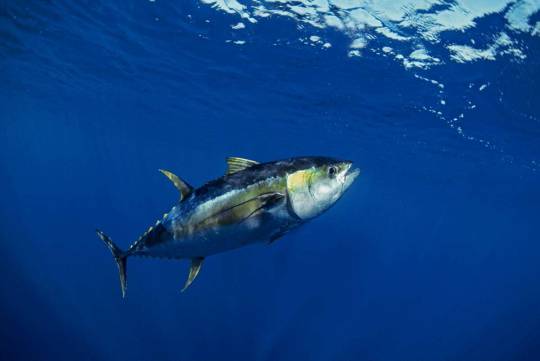

#yellowfin tuna#tuna#game fish#good eatin#fish#daily fish#fish facts#daily fish fact#facts about fish#ocean#ocean life#ocean animal#sea creature#marine#marine life#marine animal#marine species#ocean species#fish of the ocean#respect the locals#fish post
28 notes
·
View notes
Text
More Than 5,000 Ocean Species Entirely New to Science Discovered by English Expedition in Pacific https://www.goodnewsnetwork.org/5000-ocean-species-new-to-science-discovered-by-english-expedition-in-pacific/
#good news#nature#animals#science#environmentalism#conservation#environment#sea#ocean#sea life#marine life#ocean life#fish#ocean species
41 notes
·
View notes
Text
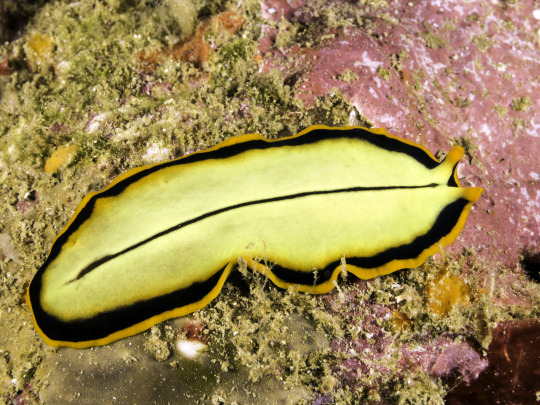
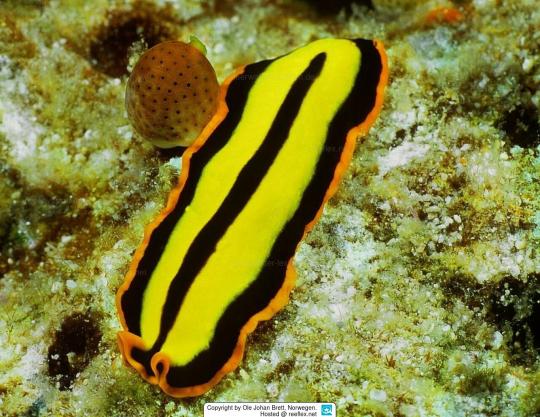

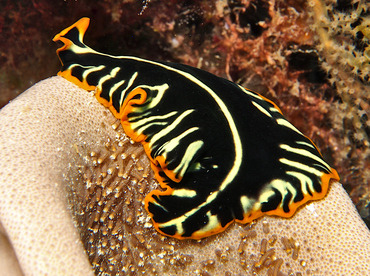
Divided flatworm | Pseudoceros dimidiatus
X, X, X, X
#the pattern variation on this species is so neat#boras posts#salt#marine life#ocean life#ocean#flatworm
523 notes
·
View notes
Text
I know Cybertronians have a whole religion and stuff and everyone uses he/him but I would like to think that maybe they would use she/her for things they can’t explain as well.
I think they’d call space she or her. Because she’s desolate, but she’s also provided them sanctuary in a war that never ended, she was their way of transport for safety, and I think they might describe Space in much the same way one might describe the sea: Beautiful and full of life when you know where to look, but unforgiving and relentless. Cybertronians don’t die to space the same way an organic would, but I’d imagine it’s still cold and their bodies still need to undergo certain changes so they can handle the eerie quietness and the frigid cold and the nothingness. I think Cybertronians might describe a star or a supernova as she/her, too, and maybe even a ship they find dear to them. The Lost Light is a she, as is The Nemesis, as is the arc. These are concepts I always try to merge onto my fics but I think outright talking about them instead of putting it in a 2k word ramble is good, too. See if people share my vision
#idk I think abt the lack of she/her a lot#and space is their sanctuary! they use her all the time and it’s this big vast emptiness with planets far and between#space is not much different from the ocean#specially for a species that doesn’t quite have an ocean#they speak#maccadam#transformers
399 notes
·
View notes
Note
Do you rate extinct species? Anomalocaris my beloved…
Today on CHUNK! FUNK! GUNK! We rate
the ANOMALOCARIS:

0/10 Chunk
10/10 Funk
0-1/10 Gunk
As a prehistoric shrimp-thing, these guys are mostly exoskeleton, no chunk. I also couldn’t find anything on their slime or mucous secretion, which makes sense since we only have fossils to go off of. I’m left to assume that they were dry little guys. They min-maxed for maximum funk though. Look at this guy. What a creature.
Overall: 7/10
I don’t know a whole lot about fossils since I didn’t have a dinosaur phase. However, I do love a good Cambrian creechur. I want to pat its flat little head.
#chunk funk gunk#chunk#funk#gunk#anomalocaris#extinct animals#extinct species#cambrian#ocean#ocean animals#fossil#asks open#shrimp#(do I tag it as a shrimp? it’s like an ancient shrimp)#(I mean it’s name literally translates to ‘Weird Shrimp’)#shrimp is bugs
194 notes
·
View notes
Text
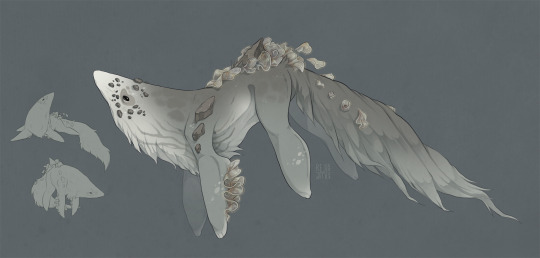
her name is call
#whale#creature design#creature#arpg#closed species#those who went missing#esk#nature spirit#ocean spirit#my new girl isnt she pretty#she was a neanderthal in her past life :D
93 notes
·
View notes